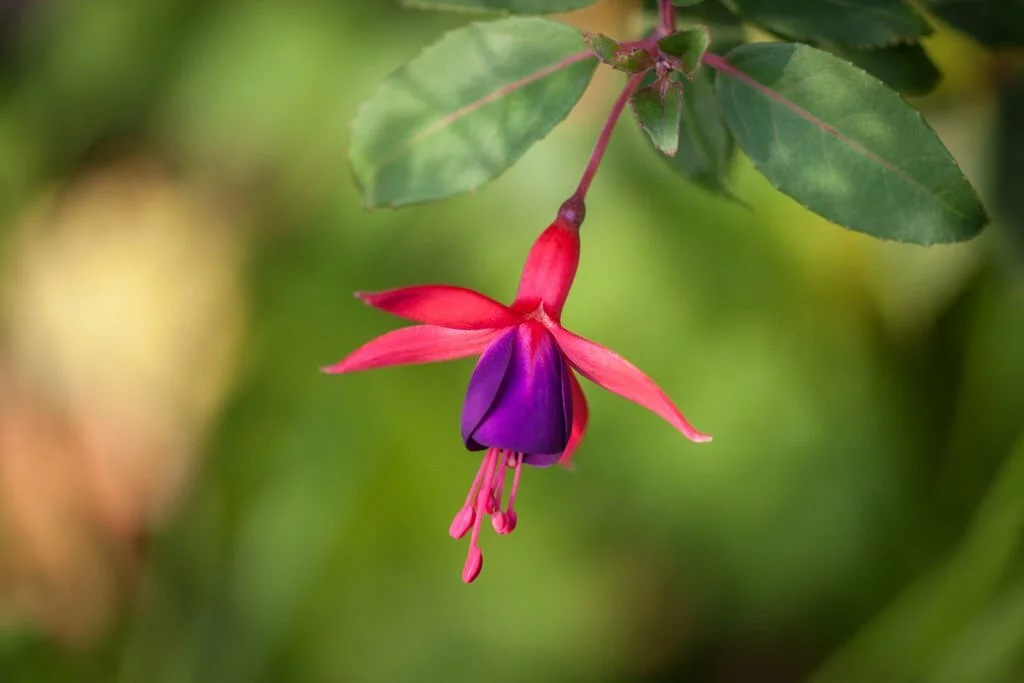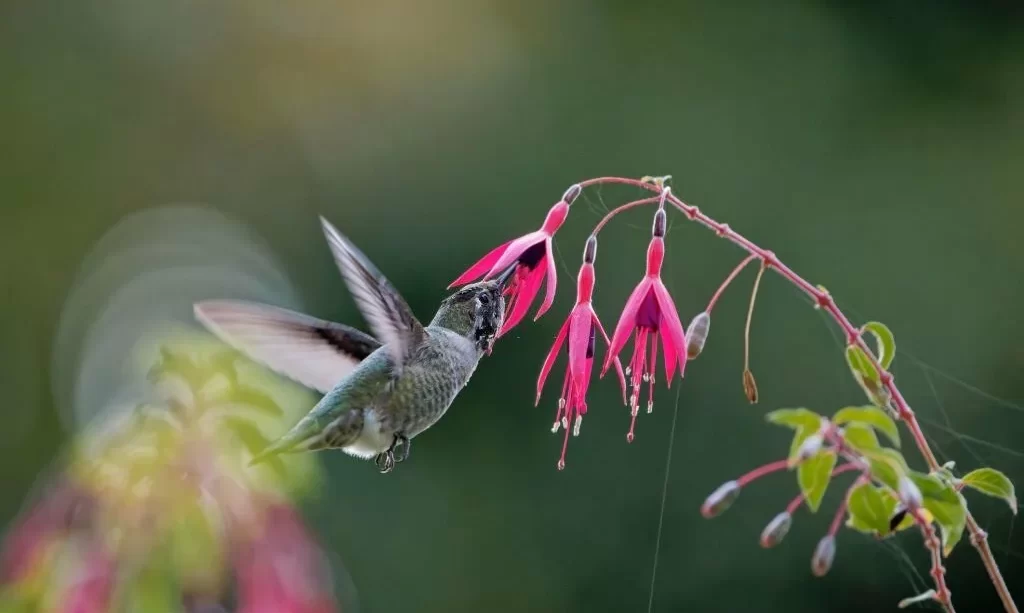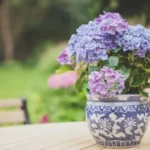Fuchsia, with its enchanting pendulous flowers that resemble delicate earrings, is a true marvel of the garden. These vibrant blooms, ranging from deep pinks and purples to soft pastels, captivate the eyes of garden enthusiasts worldwide. But what adds an extra layer of charm to fuchsia is its potential to attract one of nature’s most delightful creatures: hummingbirds. In this article, we’ll explore the connection between fuchsia and hummingbirds, two wonders of the natural world. We’ll delve into the allure of fuchsia in gardens, the mesmerizing nature of hummingbirds, and the question that many garden enthusiasts ponder: Do hummingbirds like fuchsia? Our journey will reveal how these captivating birds can be encouraged to grace your garden with their presence, adding a touch of magic to your outdoor space.
- Feature. The flowers have a pendulous teardrop shape and are displayed in profusion throughout the summer and autumn, and all year in tropical species. They have four long, slender sepals and four shorter, broader petals.
- USDA Hardiness Zone. Fuchsias is a very beautiful flower grown in 8-10(USDA).
- Mature size. Fuchsias can grow to be about 12 to 18 inches in height, with a width of 15-18 inches.
- Sow. Press seeds down lightly in the soil, and cover them with a thin layer of potting soil. Cover the containers with clear, loose plastic. Temperatures should be consistent at 75 degrees Fahrenheit.
- Use. The unique remarkable blooms make great cut flowers and bouquets and can be used in flower arrangements. Or perfect for adding beautiful, lasting color to borders, gardens, containers, or window boxes.
Fuchsia: A Garden Marvel
Fuchsia, often admired for its intricate and pendulous flowers, is a garden marvel that has earned its place in the hearts of gardeners. These plants showcase tubular, often bi-colored flowers that dangle like miniature chandeliers, creating a stunning visual display. Fuchsia’s versatility allows it to thrive both in garden beds and hanging baskets, making it a cherished choice for a wide range of garden settings. With its vivid colors, lush foliage, and pendulous blooms, fuchsia adds a touch of elegance and vibrancy to gardens, attracting admirers of all ages.

Hummingbirds: Nature’s Delight
Hummingbirds, known for their dazzling iridescent plumage and their unique hovering flight, are a true delight of nature. These tiny avian acrobats captivate observers with their rapid wingbeats and aerial maneuvers. Their diminutive size, combined with their striking appearance, makes them an object of fascination for bird enthusiasts. Gardeners, in particular, are often enchanted by the prospect of attracting these enchanting birds to their outdoor spaces. The desire to create a hummingbird-friendly garden stems from the joy of observing these remarkable creatures up close and contributing to their well-being.
Fuchsia and Hummingbirds
The relationship between fuchsia and hummingbirds is one of mutual attraction. Hummingbirds are naturally drawn to the tubular flowers of fuchsia. These flowers provide a perfect fit for the long, slender bills of hummingbirds, allowing them to access nectar easily. The vibrant, pendulous blooms of fuchsia, with their rich colors and graceful form, act like a siren’s call to hummingbirds. As hummingbirds feed on the nectar within fuchsia flowers, they inadvertently transfer pollen, aiding in the plant’s pollination process. This symbiotic relationship benefits both parties, as fuchsia enjoys efficient pollination, while hummingbirds receive a nourishing nectar source. Gardeners can take advantage of this natural attraction by planting fuchsia in their gardens to encourage visits from these captivating birds.
Creating a Hummingbird-Friendly Garden
For garden enthusiasts aiming to attract hummingbirds to their outdoor spaces, fuchsia is a wonderful choice, but there are additional steps to create a hummingbird-friendly garden. Planting a variety of nectar-rich flowers, including fuchsia, is a crucial aspect. These flowers should offer a range of bloom times to provide a continuous nectar supply throughout the hummingbird season. Aside from nectar sources, consider adding shrubs and trees that offer safe and suitable nesting spots for these birds. Providing water sources like birdbaths or water features also enhances the appeal of your garden. Hummingbirds appreciate both natural and artificial water sources for drinking and bathing. Creating a hummingbird-friendly environment ensures that these delightful birds will not only visit but may choose to make your garden their home, granting you the joy of frequent hummingbird sightings.
- ATTRACTIVE FEEDER: [Set of 2] 10 ounces of nectar in this bright red hummingbird feeder attract multitudes of hummingbirds to your backyard. 5 flower-shaped feeding ports and perches are arranged in a circular manner for several birds to feed at once.
- LEAKPROOF RESERVOIR: The mouth of the reservoir tightly screws onto the base, effectively sealing the bird feeder. After filling the container and screwing it onto the base, flip it over; the feeder will not leak even while upside down.
- ANT GUARD FOR HUMMINGBIRD FEEDERS: An ant moat is attached to the top of the feeder to repel ants. Fill it with water and drive away any approaching bugs. Ensure the nectar you prepared for the hummingbirds is pure and free of any creepy-crawlies.
- ERGONOMIC DESIGN: The wide mouth ensures easy cleaning and filling, and the 2-part base easily twists apart for an effortlessly thorough cleaning job. Of clear hard plastic, you can monitor nectar levels so you always know when to refill. Hand-wash only; Not dishwasher safe.
- SECURE HANGING: No tools are required! The hummingbird feeder is slipped onto a tree with an S-shaped hook or tightly tethered with a loop rope. (Both are included.) Hang the feeder from a height of 5 feet above ground and enjoy watching the birdies flock.
Other Considerations
When it comes to attracting hummingbirds to your garden with fuchsia and other nectar-rich plants, several additional factors should be considered. The geographical location of your garden can significantly influence the likelihood of hummingbird visits. Some regions are more naturally suited to hummingbirds, and certain species of these birds are more prevalent in specific areas. Seasonal variations, such as migration patterns, also play a role, as different species of hummingbirds may visit gardens at different times of the year. Being attuned to the unique conditions of your region and the seasonal habits of hummingbirds can help you plan and create a garden that’s appealing to these tiny, iridescent visitors.
Conclusion
The enchanting fuchsia plant, with its pendulous and vibrant flowers, holds a special place in the hearts of garden enthusiasts. Its natural appeal to hummingbirds, those iridescent avian acrobats, adds an extra layer of magic to any garden. The question of whether hummingbirds like fuchsia is answered with an enthusiastic “yes”. These birds are naturally drawn to fuchsia’s tubular blossoms, creating a harmonious relationship that benefits both parties.
To create a hummingbird-friendly garden, planting fuchsia is an excellent choice, but it’s just one part of the equation. Providing a variety of nectar-rich flowers, suitable nesting spots, and water sources can enhance the appeal of your garden to hummingbirds. By taking these steps and being mindful of regional and seasonal considerations, you can transform your garden into a haven for these delightful visitors. The result is a garden alive with the vibrant colors and rapid flight of hummingbirds, a true testament to the wonders of nature and the joy of gardening.



![Hummingbird Feeder 10 oz [Set of 2] Plastic Hummingbird Feeders for Outdoors, with Built-in Ant Guard - Circular Perch with 5 Feeding Ports - Wide Mouth for Easy Filling/2 Part Base for Easy Cleaning](https://m.media-amazon.com/images/I/419ueTPk3OL._SL160_.jpg)

